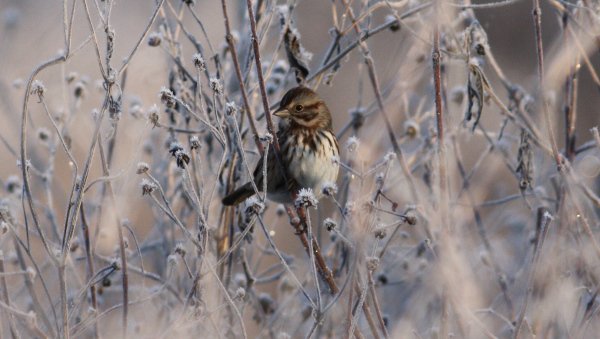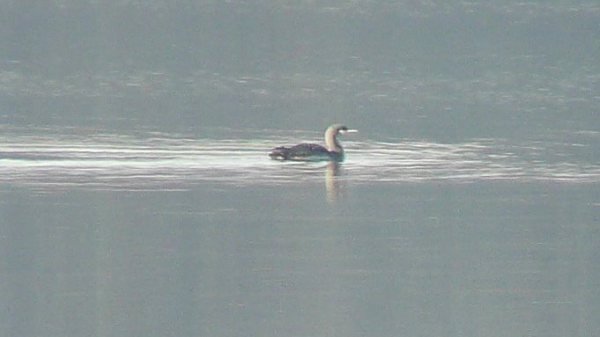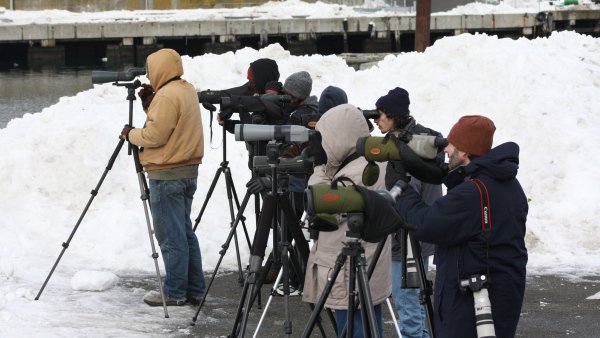
Christmas Bird Count season is right around the corner, and if you’re anything like me you’re pretty excited about it. This year I get to start from scratch, having moved to a new part of the state filled with new birds and birders. After several years of acting more or less as a CBC mercenary, slotting into whatever area had an opening in any of the local counts, I’ve moved to Greensboro ready to put down to bird count roots. To take whatever area I was handed in the Greensboro, NC, CBC and make it my own for as long as I felt up to it.
Well, things worked out pretty well when I was actively recruited to participate in this years CBC following a handful of locally good finds. And all the better, the area I was handed was nothing short of a situation of which birder dreams are made. A long-time active birder in Greensboro finally released his grip on Lake Townsend after 35 years of annual CBC coverage, citing poor health. That area, in which lies the deepest reservoir in Guilford County and the site of dozens of noteworthy regional and state records, is now all mine. To say I stumbled into a CBC goldmine is a bit of an understatement. I won the lottery.
 North Carolina’s 2nd inland Pacific Loon was on Lake Townsend in 2008. The part of the lake where it was seen is in my CBC area.
North Carolina’s 2nd inland Pacific Loon was on Lake Townsend in 2008. The part of the lake where it was seen is in my CBC area.
So I’m ready to go for my local CBC. But are you? In honor of the biggest winter birding event of the year, here are a few tips and tricks I’ve picked up over nearly 20 years of CBCing. Maybe some of them will help you make the most of your winter birding.
Bundle Up: This may sound pretty intuitive, but you’d be surprised how often people don’t go with their gut here. CBCs are different than your run of the mill winter birding experience, because you’re generally going to be spending much more time out in the field that you usually do, and in weather that you might not usually choose to bird in. The truth is, there’s really no such thing as bad weather, only improper clothing, so be sure to overdo it. In the winter it’s much easier to take layers off later than put layers on later, and for that reason I tend to layer on lots of thinner items rather than one big thick item. If you’re properly attired, with long underwear, thick socks, multiple jackets, hat and gloves, you’ll be able to spend more time in the field and count more birds. So don’t hold back!
 The Superbowl of Birding in Massachusetts, while not a CBC, put our winter apparel to the test.
The Superbowl of Birding in Massachusetts, while not a CBC, put our winter apparel to the test.
Gloves for Gadgets: You might think that gloves are well covered under apparel, but think again! Those of us who are avid users of BirdLog to keep track of our sightings in the field are at a distinct disadvantage in the winter. The touchscreens on our smartphones do not recognize the touch of a finger wrapped in a glove, so in order to constantly be updating our totals, you’re constantly having to remove your glove and expose that skin to the winter chill. This is not a pleasant way to go birding.
One of the best purchases I ever made to make my winter birding and eBirding more comfortable was a pair of smartphone-ready gloves. The fingertips on these bad boys are made of a conductive material that allows them to be used in the cold without removing the glove. They’re a life-saver and well worth asking your friends and family if you’re still in need of a holiday gift. Or, if you’ve already spent money on a great pair of gloves, you can retrofit that pair using a needle and some conductive thread. It works just as well.
Grow a Beard*: Have you noticed that most birding luminaries sport chin hair? It’s like having a scarf on your face. You’ll want one of these to keep the chill off.
*may not be an attainable goal for all birders
Have a plan: You don’t need to map out your route to the minute like on a big day, but it’s helpful to know where you want to go, how you want to get there, and what you want to see at each site. The advantage of running the same CBC route year in and year out is that you don’t have to do the legwork after a while, but for a new site it’s nice to be able to get out and scout the area a bit before the big day. The goal of a CBC is not get as many species as possible, but it’s impossible to avoid the competitive aspect. You want to beat your species total for the year before. You want to beat the species total of the next town over. You want to find that crazy vagrant that makes everyone’s jaw drop at the countdown dinner. And while there’s a certain amount of luck involved for all that, the saying “luck is the residue of design” is often true for a reason. So put some time in to make your count the best yet.
Countdown among Friends: When I was a young birder I loved the countdown dinner at the end of my local CBC. It was warm after a generally cold day. There was a variety of food and usually great deserts. And then we all sat in a circle and did the lists. When I moved to North Carolina, the countdown dinner culture was less essential and I feel like the counts I did suffered a bit because of it. Thing is, CBCs are popular mostly for the camaraderie than for the birding, which depending on the count circle can be excellent to middling. It’s the idea that you’re doing this with thousands of other birdwatcher world-wide that makes it so special, and getting together with your local cadre – your team, as it were – is a fun way to celebrate a season that for almost all of us is about community and family. So get together with other birders in real space and enjoy those birds. It is not to be missed.
What are your favorite CBC traditions? And what are your tips for successful Christmas Bird Count, either as a counter or an organizer? I’d love to hear them in the comments.













Perfect timing! I have a post almost ready to go about being a first time compiler for a CBC.
Also, who is that big lug standing out in front of the scope line?
The people in that Superbowl photo look very familiar. The location does too.
Another option for birding gloves that I like are convertible mittens. Those have a mitten flap that can be pulled back for writing notes or fiddling with gear. I find those allow greater dexterity than all but the thinnest gloves.
As the German constitution plainly states:
Property entails obligations (Eigentum verpflichtet)
You won the lottery, you have one of the best CBC areas with a tremendous history – I hope you cope well with pressure! 🙂
Okay, I have a Redwing outside my window right now – just tell me when you’ll be counting and I’ll send it your way…